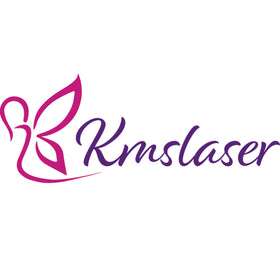Are you a brand owner, distributor, beauty salon owner, spa or clinic looking into investing in a shockwave therapy device? Shockwave therapy has become increasingly popular for treating various musculoskeletal conditions and pain relief using acoustic sound waves. But if you’re going to invest in such an innovative medical technology, it's important that you understand the two distinct types of shockwave therapy: radial and focused. In this blog post we will discuss both of these therapies and outline their main benefits so that you can make an informed decision regarding which therapy may work best for your facilities needs.
Introducing Shockwave Therapy - Exploring the History and Benefits
Have you ever heard of shockwave therapy? This revolutionary treatment has been gaining popularity in recent years, and for good reason. Shockwave therapy uses sound waves to stimulate the body's natural healing processes and provide relief from pain and other conditions. But shockwave therapy isn't just a new trend - in fact, it has been used as a medical treatment for decades. Originally developed for breaking up kidney stones, shockwave therapy has since been found to have a wide range of potential benefits, from treating tendonitis and plantar fasciitis to improving erectile dysfunction. With its non-invasive nature and minimal side effects, shockwave therapy is quickly becoming a go-to treatment option for those seeking relief from pain and injury.
Differentiating between Focused and Radial Shockwave Therapy
For those experiencing chronic pain, shockwave therapy may be a viable option for treatment. However, not all shockwave therapy is created equal. Differentiating between focused and radial shockwave therapy is important in order to receive the most effective treatment. Focused shockwave therapy uses a highly targeted approach to break up calcified tissue and promote healing. On the other hand, radial shockwave therapy is a less concentrated approach that disperses energy more broadly, making it a better option for those with a wider area of pain. By understanding the differences between these two methods, patients can work with their healthcare provider to determine which is the best fit for their specific needs.
Examining the Mechanism of Action of Focused Shockwave Therapy
Focused Shockwave Therapy is an innovative medical treatment that has shown promising results in alleviating chronic pain and promoting tissue regeneration. Researchers are currently examining the mechanism behind its therapeutic effects, which is still not fully understood. Essentially, Focused Shockwave Therapy harnesses the power of high-energy sound waves to stimulate the body's natural repair mechanisms. These sound waves are directed at specific areas of the body, triggering a cascade of cellular and biochemical responses that ultimately promote healing. As science continues to advance, we look forward to gaining even more insights into the fascinating world of focused shockwave therapy.
Looking at the Application of Radial Shockwave Therapy
Radial shockwave therapy is a treatment that uses shockwaves to address various musculoskeletal disorders or injuries. This non-invasive technique is commonly used to alleviate pain and promote healing without the need for surgery. The therapy works by stimulating the body's natural healing response, increasing blood flow, and breaking down problematic tissue. Radial shockwave therapy has been shown to have positive results in treating issues such as plantar fasciitis, tendinitis, and hip pain. With its ability to effectively target specific areas, it offers patients an alternative to more invasive treatments. As the field of physical therapy continues to evolve, radial shockwave therapy is poised to become an essential tool for practitioners seeking to provide the best care possible.
Understanding the Possible Side Effects from Using Shockwave Therapy
If you've been considering shockwave therapy as a treatment option, it's important to understand the possible side effects that come along with it. While shockwave therapy can be an effective way to alleviate chronic pain and promote healing, there are risks involved that you should know about before making a decision. Some of the most common side effects include bruising, swelling, and redness in the treated area. In rare cases, patients may experience more severe side effects like nerve damage or blood clots. It's important to weigh the potential risks and benefits of shockwave therapy with your doctor to determine if it's the right treatment option for you.
Reviewing Treatment Protocols for Both Types of Shockwave Therapies
Shockwave therapy has become increasingly popular in recent years as a non-invasive treatment option for a variety of conditions. There are two types of shockwave therapies: focused and radial. While both have proven to be effective in treating musculoskeletal conditions, reviewing and comparing their treatment protocols can be beneficial. By understanding the differences between the two, patients can receive more targeted and efficient care. Focused shockwave therapy utilizes a single, concentrated wave to target a specific area, while radial shockwave therapy disperses energy in a wider range. Both types have their advantages and disadvantages, and a thorough evaluation of a patient's condition is necessary to determine the best course of treatment. Whether it's for chronic pain or injury recovery, considering all options and protocols can lead to successful outcomes.
Overall, shockwave therapy can be a powerful treatment option for a variety of conditions. It can help improve mobility, reduce pain, and may even stimulate tissue regeneration which encourages healing. Despite the potential benefits, it is important to understand that there are some risks associated with this type of treatment. You should always consult with a healthcare professional before beginning any type of shockwave treatment regiment. Depending on the severity and location of your problem, they may recommend one method of shockwave therapy over another. Furthermore, you should always follow the established protocols for both types as these protocols were created to maximize outcomes while minimizing unwanted side effects. Ultimately, if administered correctly by a qualified provider, shockwave therapy can provide significant relief from chronic pain or other musculoskeletal dysfunction so it is well worth exploring if you are looking for an alternative treatment option that takes advantage of this rapidly evolving technology.

